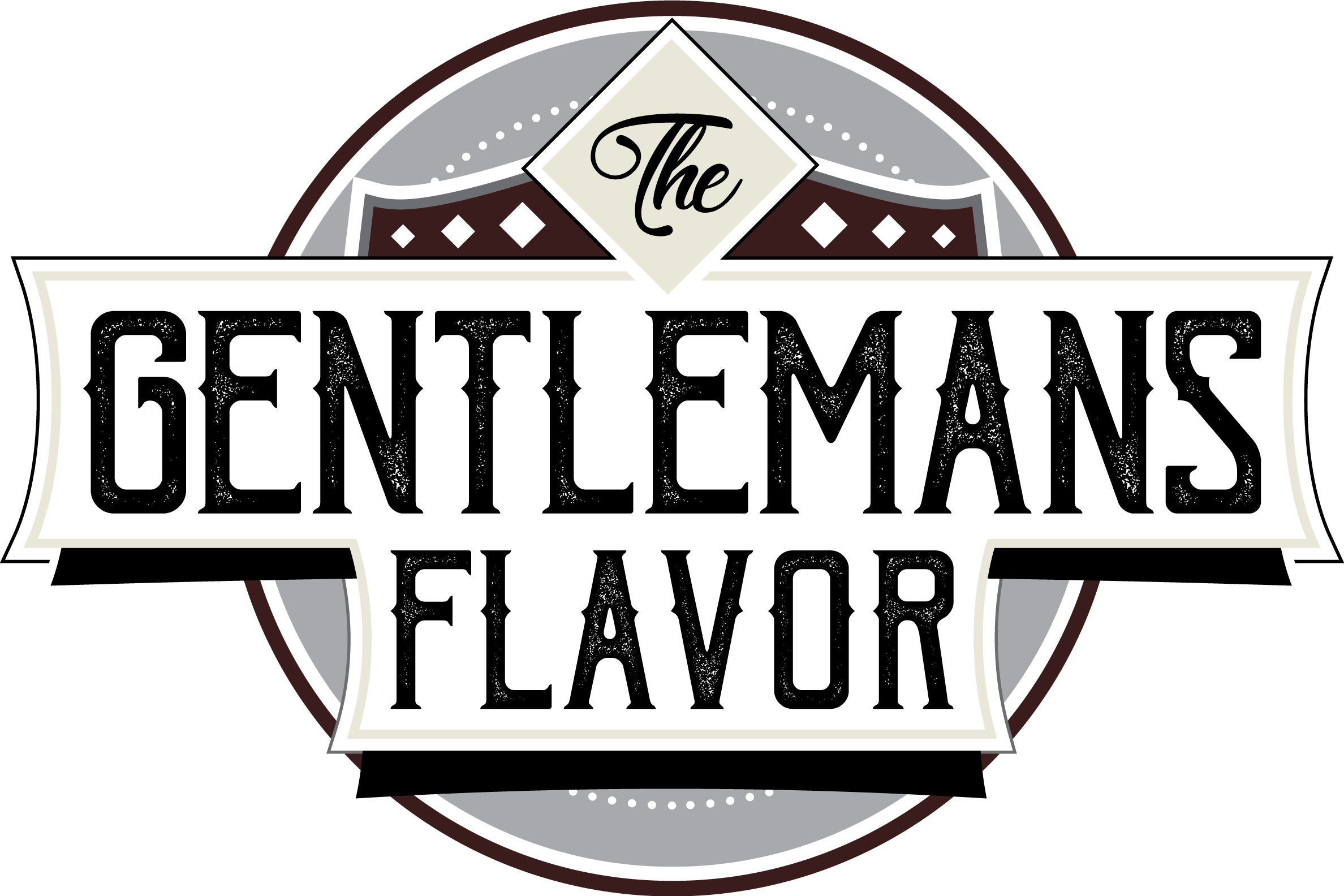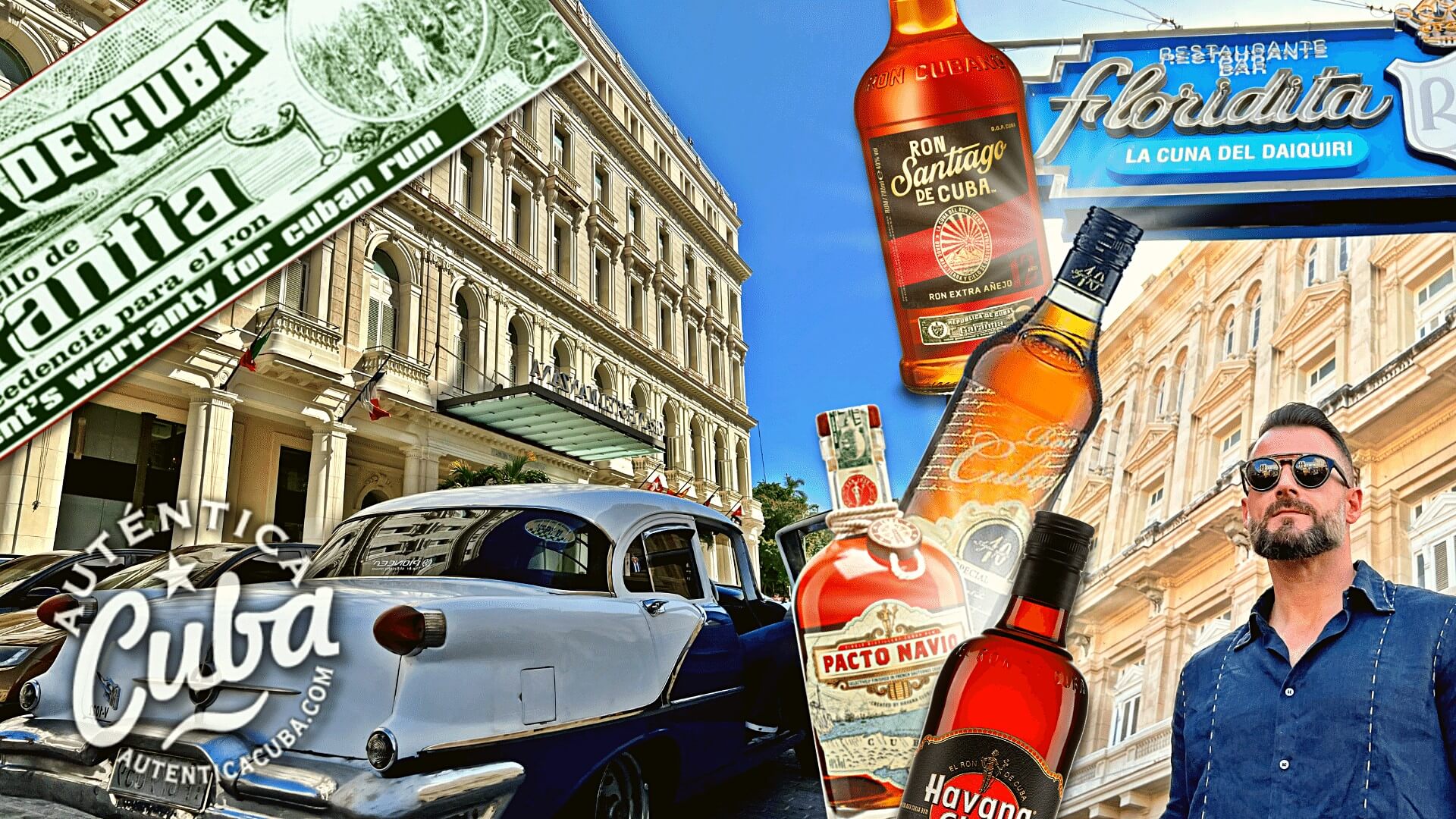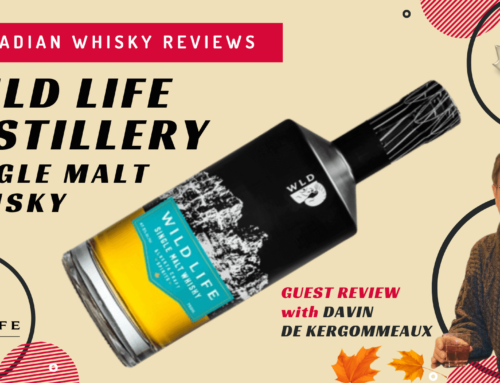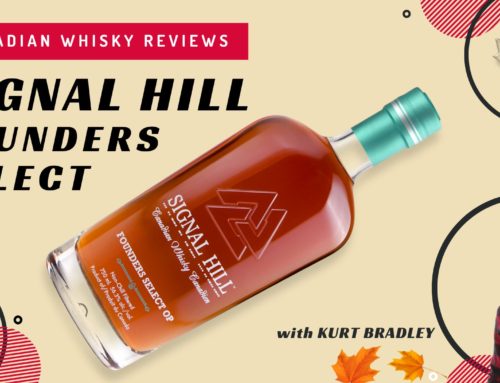A week-long rum field research project in Cuba with its Spanish-style of rum, it’s brands, and it’s state-run industry
Apart from mostly rum and cigars, Cuba is not exactly what you would call a shopper’s paradise.
In comparison to the likes other destinations, the product selection in communist-run Cuba leaves a little to be desired, with retail locations typically offering a very similar selection of products, with similar pricing from one location to the next, largely dictated by the government.
Of course to a certain extent, this also applies to buying rum, especially after Cuba was forced to wrestle with Covid-19 and Hurricane Ian, with both events having caused severe supply chain issues.
With so little information available about what’s presently on the shelves in Cuba, I spent a week in Havana and Varadero, Cuba to see what brands are out there, what impressed me, how much they cost, and how I could get my hands on some.
*NOTE: Unlike the 750ml sizing of North America, rum bottles available in Cuba are available in 700ml or 500ml, similar to Europe and Japan.
Currency In Cuba And The Cuban Black Market
Presently, most Cuban locations display pricing in US Dollars, and will accept Cuban Pesos (CUP), USD, Euros, British Pounds Sterling and Canadian Dollars.
The Cuban Peso is regulated to be on par with the US Dollar, but is worthless anywhere else but in Cuba. The government recently did away with the CUC (Convertible Cuban Peso) which was known as the “tourist money”.
Despite a decades-long embargo with the United States, USD is the preferred “street currency”, which Cubans use as hard cash to buy things from each other and on the popular black market.
Sadly, to survive or try to get ahead, many Cubans resort to theft to sell rum on the black market.
As Cuban rum is a hot commodity, numerous times I was offered rum at a price much cheaper than the going market price. Sometimes at my hotel in Varadero, and even in Havana at a rum factory. As an example, I was offered a bottle of Selection de Maestros, which normally retails for approx. $55 USD, for $35 Canadian (which is approximately $23 USD – essentially at half price).
Hotel employees often resort to claiming breakage of bottles or short change guests on the shot volume in drinks to create a surplus in comparison to what is recorded on paper.
They then sell this surplus in the form of bottles to tourists. Often other staff turn a blind eye, or sometimes even receive a cut of the action.
Under a communist system, employees run these side hustles without much fear of losing their job, as the repercussion of losing their job does not outweigh the incentive to make beyond their meagre wage – especially when there are mouths to feed.
Those who steal often justify their actions by suggesting that the Communist government takes from them.
If you’re looking for hot rum in Cuba, all you have to do is ask. But before you do, understand that in the long run it is likely further setting back an already very broken economic system.
In the end, it’s your call.
The ‘Spanish Style’ Of Rum
First, a little about Cuba’s type of rum, which is crafted in what is often referred to as the ‘Spanish style’.
Though sugar cane production in Cuba can be dated back to the early 1500’s, in 1777, there was word of a raw and strong beverage made out of sugar cane juice that the working classes called Tafia (today known as aguardiente).
In 1820, Fernando de Arritala distilled a rum with a higher quality than much of what could be found across the entire Caribbean at the time, which began to put Cuban rums on the map.
However, it wasn’t until 1862 when Catalan Spaniard Facundo Bacardí bought a small distillery in Santiago de Cuba, that Cuban rum truly made history.
Bacardí tested a new formula that used sugar cane molasses and eliminated the impurities of the product, giving birth to a superior treasure:
Cuban light rum.
Spanish style rums like Cuba’s are lighter in character than the other major styles of world rum, styles such as the English style (robust character, mostly pot-distilled and made in countries like Jamaica, Barabados and St.Lucia) and The French Style (distilled from sugar cane juice instead of molasses, complex with a vegetal character and made in countries like Haiti, Martinique and Guadeloupe).
Spanish style rums are made from the molasses substrate of sugar cane.
They are made in Cuba, but are also crafted in Spanish-speaking countries like the Dominican Republic, Puerto Rico, and Nicaragua to mention a few.
They are primarily blended, column-distilled rums that are dry, lighter in character and very agreeable. Cuba’s Spanish style of rum works exceptionally well in classic rum cocktails such as the mojito and Daiquiri as well as tall drinks like the Cuba Libre, but can also be enjoyed neat or with ice.

Havana Club Seleccion de Maestros
45% ABV | Price In Cuba: $56 USD
Havana Club’s Maestros Roneros (Master Rum Makers) select their favorite barrels from the reserves. They then blend the contents and re-cask twice before bottling at cask strength.
In my opinion, this is the best bang for your buck in Cuba when it comes to premium rum.
TASTING NOTES
The nose presents oak with candied orange peel and powdery vanilla. Somewhat similar to the nose, the palate produces raisins, candied orange peel, molasses, tobacco and powdery vanilla with a medium-long finish. Overall, this has an elegant, coating mouthfeel with a slightly sweeter profile and is less drying than other Cuban rums.
Was easy to sip multiple glasses of throughout the course of an afternoon outside in the hot sun.
The Cuban Brands: Havana Club
Presently owned by Pernod-Ricard from France, Havana Club is Cuba’s biggest export when it comes to rum. Havana Club is plentiful, and available everywhere in Cuba; at the resorts, the restaurants, coffee shops and at the airport for purchase.
Though the locals are relatively proud of Havana Club and it has been branded as “El Ron de Cuba” (The Rum Of Cuba), I don’t think that Cubans see it as theirs anymore; that they reserve for the brand Santiago – which can only be purchased on Cuban soil.
When in Havana, I visited the Museo del Ron, which sounds like it is a museum for all Cuban rum, but is actually Havana Club only.
There, I sampled the 3 Anos (Year), the 7 Anos and the Seleccion de Maestros. I also sampled the Pacto Navio and the 15 Anos at another location. At the famous La Bogedita del Medio (birthplace of the Mojito), the 3 Anos is used to make the Mojitos. Other locations also make Mojitos with a newer Havana Club expression that is called ‘Profundo’.
Among Havana Club’s super premium rum is the Maximo, which was made in partnership with Cohiba Atmosphere. It is is made from a blend of very old Havana Club rum reserves and was made to be enjoyed with a cigar. It is among the most expensive rum expressions in the world at $2189 USD in Cuba.
Other super-premium Havana Club rums that are available are the 15 Year ($150 USD), the Tributo ($350 USD) and the Union ($425 USD)
All in all, no other Cuban rum brand has as many expressions as Havana Club, and is as pervasive across the island and the world at large.

Havana Club Pacto Navio
40% ABV | Price In Cuba: $61 USD
Havana Club’s Pacto Navio is a complex blend of aged rum, selectively finished in French Sauternes wine casks. This release was created to celebrate the trade routes between France and Cuba in the XIXth century.
This is an elegant rum with a nice element of richness that comes from the Sauternes casks.
TASTING NOTES
The nose presents caramel, dark chocolate-covered liqueur cherries and oak. The palate has a smooth, elegant mouthfeel that produces raisins, creamy caramel, red licorice and oak. The finish is slightly drying with coffee, molasses and oak. Overall, the Pacto Navio tastes almost cognac-like at times, which is appropriate given the wine cask finish.
The Cuban Brands: Santiago de Cuba
Ask 10 Cubans what their favorite Cuban rum is, and 8-10 of them will likely tell you Santiago de Cuba. What they don’t seem to agree on however, is which Santiago is their favorite. Some say the 11 year, some say the 12, and some say the 8.
I actually found the 8 and 11 to be the most common answers, and believe me – I was asking around a lot.
Santiago de Cuba comes from the hottest southern part of the island called the Oriente region. It has been called as “the Cradle of Light Rum”. It is where the city Santiago de Cuba is situated, where the rum of the same name has been produced since 1862.
Santiago rums have a very distinct taste, with some elements that are very similar to Havana Club, but with a bit more of what I refer to as a ‘vegetal funk’ essence.
Whereas Havana Club is distilled to appeal to a broader swath of audience, Santiago rums are more of a deeper cut. Santiago rum is said to constitute the highest expression of Cuban Rum tradition.
In a blind taste, I was able to clearly tell the difference between the Santiago 8 and the Havana Club 7. I could tell the difference on the nose alone, as like the palate, it had a clear hint of this ‘vegetal funk’ note. The 8 had the least vegetal funk compared to the 11, and to the Extra Añejo 12.
Santiago is a more adventurous Cuban rum that appeals to those who prefer an element of funky complexity to their rum, something a bit closer to a Jamaican rum. I enjoyed the Santiago rums, but could not consume them as consecutively as I could Havana Club or even Cubay.
Santiago’s highest-end expressions that were available include the 21 Year, 25 Year, and then it’s a big jump to the super-expensive Santiago de Cuba 500, ($3450 USD). This price exceeds Havana Club’s Maximo by over a grand.

Santiago de Cuba Ron Extra Eñejo 12 Años
40% ABV | Price In Cuba: $67 USD
Santiago de Cuba’s 12 Year Old is the oldest available expression available until you jump to the 21, 25 year and the “500” (not a 500 year-old rum). Surprisingly given its higher price tag, none of the core Santiago rums choose to use a cork, and instead opt for a screw top that’s typically reserved for the lower-end mixing rums. This of course, bears no influence on taste and quality.
In comparison to Havana Club, the Santiago 12 is a very unique Cuban rum that truly embodies the distinct Santiago de Cuba profile.
TASTING NOTES
The nose presents oak, ginger and dark baking chocolate. The palate has new wood oak, black licorice, and a vegetal hint mixed with dark chocolate. The finish has black licorice and cocoa. This is a very oaky rum that is fused with dark chocolate and a vegetal essence.
The Cuban Brands: Ron Cubay
Ron Cubay is rum done almost precisely in the Spanish style. In the grand scheme of things, it is a relatively recent brand of Cuban rum founded in 1964 in Santo Domingo in the province of Villa Clara, in the centre of the island.
Despite its youth as a brand compared to other brands, it is produced under Cuba Ron S.A. in one of the country’s oldest factories. It is another brand that Cubans seem to hold dear like Santiago, but not quite as much.
Ron Cubay is made in two main varieties: Carta Blanca and Añejo. At first glance, its highest-end releases seem to be the 1870 Extra Viejo ($113) and the 1870 Extra Añejo ($125 USD), but is actually a bottle that comes in a porcelain jug that is enclosed within a treasure chest-looking box called ‘Ron Isla Del Toro’.
It retails at a staggering $778 USD. Way too rich for my blood, and most likely not worth the sticker price that seems to be praying on tourists who have more money than they know what to do with.
Cubay is also known for wide assortment of liqueurs (Coffee, Cacao, Blue Curacao, Grenadine, Maraschino, Mint, Pineapple, Banana, Triple Sec, Lemon and Coconut).
Though it’s taste profile is not quite as adventurous as Havana Club and Santiago, it is Spanish-style Cuban light rum done to a ‘T’.

Ron Cubay 10 Años Reserva Especial
40% ABV | Price In Cuba: $45 USD
Ron Cubay 10 Años has a nice amber colour and a smooth taste with a hint of spices. It is very smooth and agreeable when consumed neat, but is also perfectly suitably suitable for mixing cocktails or even tall drinks. Overall, this is very elegant, straightforward Spanish style rum that is more refined than the extra Ańejo.
TASTING NOTES
The nose presents oak, vanilla, burnt caramel, baking spices and a hint of cocoa powder. The palate brings forth powdery caramel and oak with a touch of vanilla coffee sweetener and baking spices. Medium finish with oak, spices and caramel.
The Cuban Brands: Ron Veradero
Ron Veradero was established with the support of the Spanish Crown while under Spanish rule. Its Distillery was founded in 1862. It is said to be the brand name of the ancient distilleries of Santiago, the red sun its distinguishing logo.
Ron Veradero is for the most part, a light rum done in the traditional Spanish style. They have a few aged (añejo) releases including a 15 year in a decanter-style bottle.
The Cuban Brands: Ron Santero
Ron Santero is not as easy to find as the the three main brands (Havana Club, Santiago & Cubay) but that doesn’t mean it isn’t worth mentioning.
There isn’t a lot of readily available information about the brand, and all most Cubans seem to know is that the name is associated with Santeria.
The Santeria religion is still widely practiced in Cuba and is a fusion of Catholic practices and African folk beliefs. It emerged in Cuba during the 17th century, and has been embedded in Cuban society ever since. These days, it’s far more prevalent than Catholicism on the island – Santeros outnumber Catholics by 8-1.
There isn’t much available online supporting the brand. One website that sold Santero states, “Ron Santero is bold, ceremonial, possessive and sensual a drink… pure and indomitable that it invokes, it summons and it reunites”.
Ceremonial and possessive…invokes, summons and reunites….hmmm.
The Cuban Brands: Ron Mulata
Ron Mulata, which translates to “Mulatto Rum”, is known for mostly mixing rums and an assortments of liqueurs. It is mostly entry-level Cuban rum that can be found behind most bars in Cuba for cocktails and mixed drinks.
The Cuban Brands: The Island Rum Company
Cuban state-owned sugar producer Technoazucar and Island Brands, a subsidiary of The Island Rum Company are Cuba’s first fully integrated rum production joint venture in more than 20 years, officially called ‘Ron Vigia’.
Their portfolio includes Black Tears ($12 USD), the first “dry” spiced spirit made with Cuban rum, Ron De La Progressiva de Vigia Mezcla 13, a sipping rum, and Ron De La Progressiva de Vigia 500, a limited edition sipper created to celebrate Havana’s 500th anniversary.
With the exception of the 500, you can find these bottles at the airport in Veradero in limited quantities.

Ron De La Progressiva De Vigia Mezcla 13
42% ABV | Price In Cuba: $65 USD
La Progresiva 13 is a sipping rum created by an all-female rum maestros of Bodega Vigia. It is made in association with Technoazucar, a large Cuban sugar company. The number 13 is not an age statement as the rum features a blend of 11, 13 and 15 year old rums.
TASTING NOTES
The nose presents loads of oak, with pineapple, and an herbal note, almost like teragon. The palate is classically Cuban dry in character, and has plenty of oak, with honey, vanilla and a slight salinity with smoke. The finish brings a smoky sneak attack, with more oak and pineapple.
Summary
Given the limited supply of consumer goods available on the Communist-run island, Cuba’s rum selection is actually quite wide and relatively diverse.
Being purveyors of some of the most renown Spanish-style rums, Cuba sits firmly within the category of the world’s finest rum-producing nations.
My list here is certainly not complete with all that Cuba has to offer when it comes to rum, but essentially contains most of the expressions that you will come across, especially on the higher-end. Other brands include Ron Perla Norte, Sao Can, Cubaney, and Ron Legendario.
If you find yourself in Cuba and have an appreciation for rum (of course you do, you’ve read this article), make certain that you return with a bottle or two of superb Cuban rum that the island has become so well known for.

Kurt Bradley is the founder of The Gentleman’s Flavor, to which he is also a contributing editor, host and curator.
Kurt is a certified Whisky Ambassador accredited by The Scotch Whisky Association and has achieved Level 2 Award in Wine & Spirits Education Trust with distinction.
He loves pairing aged rum with a fine cigar.























